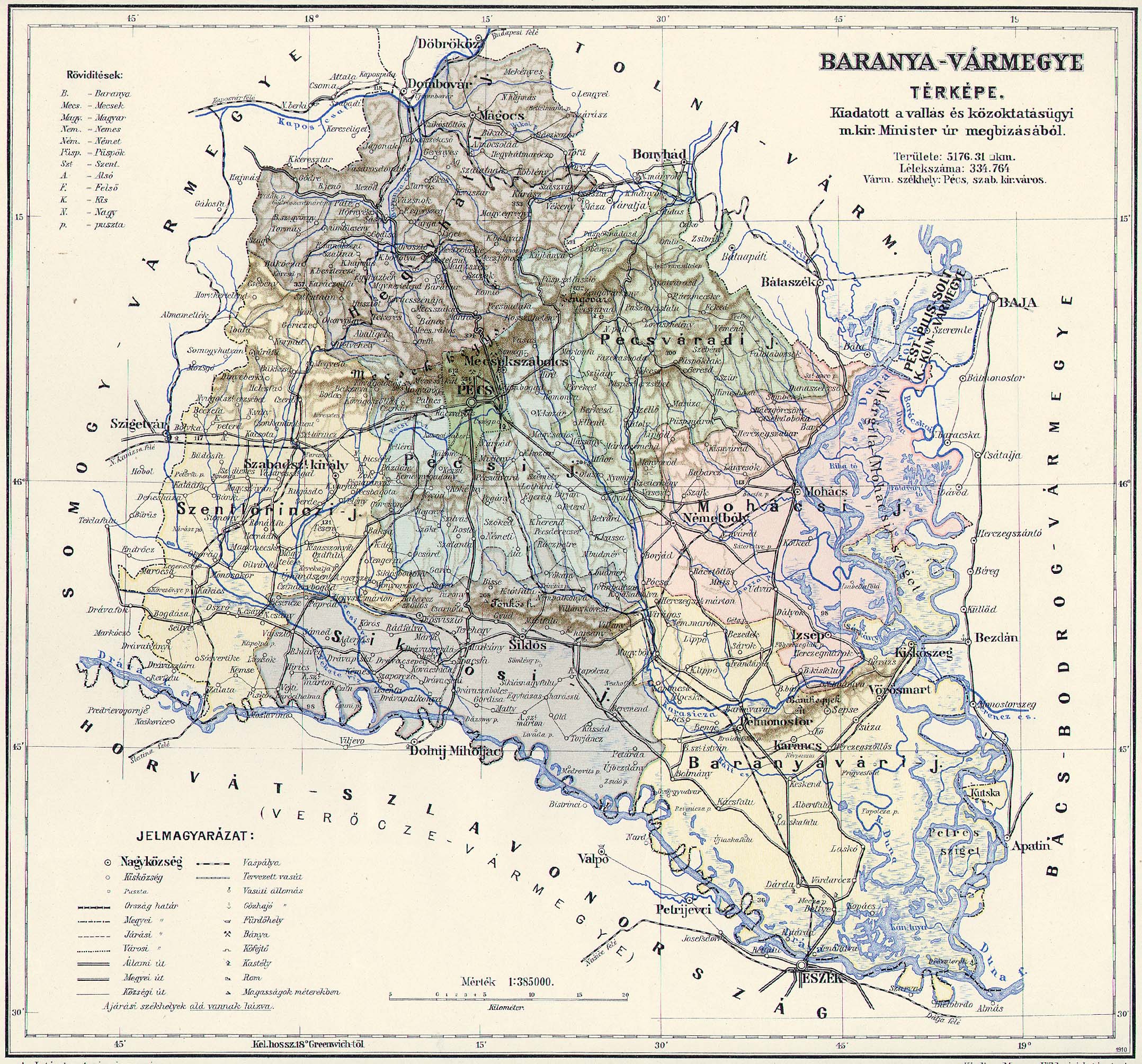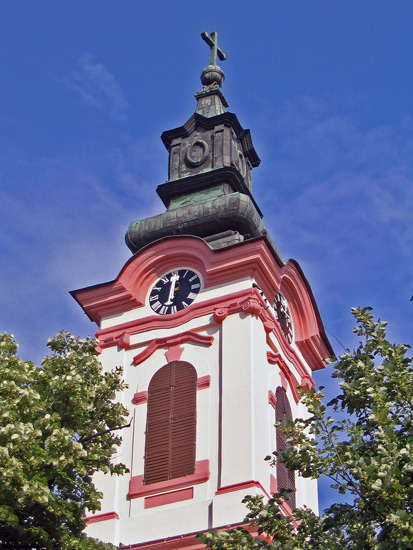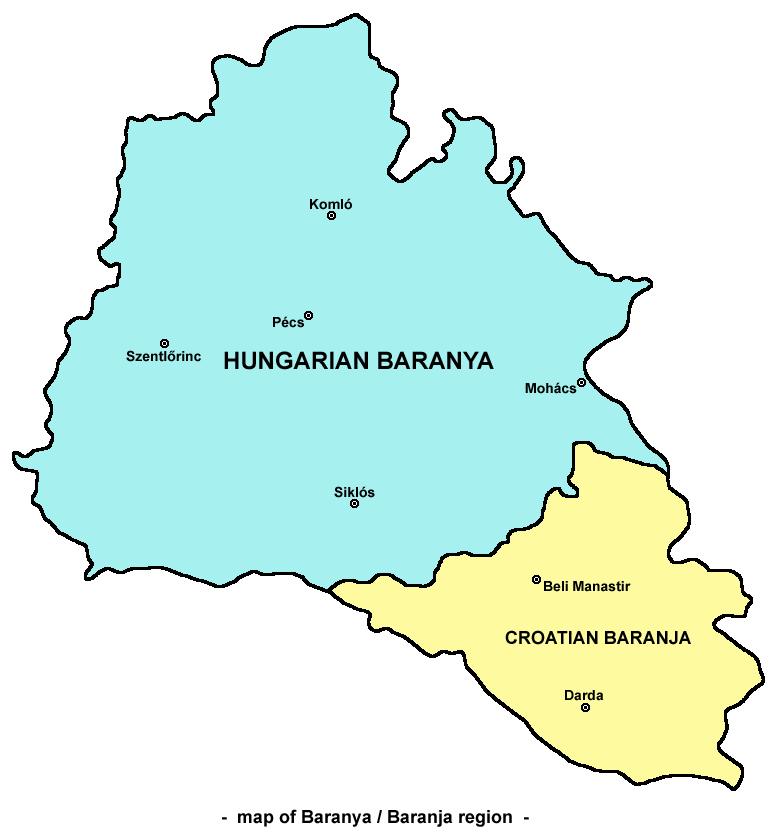|
┼Āokci
┼Āokci ( sh, / , italics=yes, , ; , ; hu, Sok├Īcok) are a South Slavic ethnic group native to historical regions of Baranya, Ba─Źka, Slavonia and Syrmia. These regions today span eastern Croatia, southwestern Hungary, and northern Serbia. They primarily self-identify as a subgroup of Croats and therefore they are not considered a separate ethnicity in Croatia and elsewhere. Population ┼Āokci are considered to be a native population of Slavonia and Syrmia in Croatia. The Croatian Bureau of Statistics does not record the ┼Āokci as a separate ethnicity (2001). According to the 2011 census in Serbia, 607 people declared as ethnic ┼Āokci. Outside of Slavonia and Syrmia, they live in the settlements of Ba─Źki Mono┼Ītor, Sonta, Sombor, Ba─Źki Breg in Ba─Źka, Serbia, and Hercegsz├Īnt├│ in Hungary. Ethnonym The term ''┼Āokac'' (masculine), ''┼Āokica'' and ''┼Āok─Źica'' (feminine), is used for the part of Croatian Ikavian speakers native in Slavonia, Baranja, Ba─Źka and Bosnia. ... [...More Info...] [...Related Items...] OR: [Wikipedia] [Google] [Baidu] |
Bunjevci
Bunjevci ( sh-Latn-Cyrl, separator=" / ", Bunjevci, ąæčāčÜąĄą▓čåąĖ, ; sh-Latn-Cyrl, label=, separator=" / ", Bunjevac, ąæčāčÜąĄą▓ą░čå, sh-Latn-Cyrl, label=, separator=" / ", Bunjevka, ąæčāčÜąĄą▓ą║ą░) are a South Slavic sub-ethnic group living mostly in the Ba─Źka region of northern Serbia and southern Hungary ( B├Īcs-Kiskun County), particularly in Baja and surroundings, in Croatia (e.g. Primorje-Gorski Kotar County, Lika-Senj County, Slavonia, Split-Dalmatia County, Vukovar-Srijem County), and in Bosnia-Herzegovina. They presumably originate from western Herzegovina. As a result of the Ottoman conquest, some of them migrated to Dalmatia, from there to Lika and the Croatian Littoral, and in the 17th century to the B├Īcska region of Hungary. Bunjevci who remained in Bosnia and Herzegovina, as well as those in modern Croatia today, maintain that designation chiefly as a regional identity, and declare as ethnic Croats. Those who emigrated to Hungary were largely assimilated. ... [...More Info...] [...Related Items...] OR: [Wikipedia] [Google] [Baidu] |
Ba─Źka
Ba─Źka ( sr-cyrl, ąæą░čćą║ą░, ) or B├Īcska () is a geographical and historical area within the Pannonian Plain bordered by the river Danube to the west and south, and by the river Tisza to the east. It is divided between Serbia and Hungary. Most of the area is located within the Vojvodina region in Serbia and Novi Sad, the capital of Vojvodina, lies on the border between Ba─Źka and Syrmia. The smaller northern part of the geographical area is located within B├Īcs-Kiskun County in Hungary. Name According to Serbian historians, Ba─Źka is a typical Slavic name form, created from "Ba─Ź" (name of historical town in Ba─Źka) and suffix "ka" (which designates "the land that belongs to Ba─Ź"). The name of " Ba─Ź" (B├Īcs) town is of uncertain origin and its existence was recorded among Vlachs, Slavs and Hungarians in the Middle Ages. The origin of the name could be Paleo-Balkanic, Romanian, Slavic, or Old Turkic. According to Hungarian historians, the denominator of the landscap ... [...More Info...] [...Related Items...] OR: [Wikipedia] [Google] [Baidu] |
Croats
The Croats (; hr, Hrvati ) are a South Slavic ethnic group who share a common Croatian ancestry, culture, history and language. They are also a recognized minority in a number of neighboring countries, namely Austria, the Czech Republic, Germany, Hungary, Italy, Montenegro, Romania, Serbia, Slovakia and Slovenia. Due to political, social and economic reasons, many Croats migrated to North and South America as well as New Zealand and later Australia, establishing a diaspora in the aftermath of World War II, with grassroots assistance from earlier communities and the Roman Catholic Church. In Croatia (the nation state), 3.9 million people identify themselves as Croats, and constitute about 90.4% of the population. Another 553,000 live in Bosnia and Herzegovina, where they are one of the three constituent ethnic groups, predominantly living in Western Herzegovina, Central Bosnia and Bosnian Posavina. The minority in Serbia number about 70,000, mostly in Vojvodina. The ... [...More Info...] [...Related Items...] OR: [Wikipedia] [Google] [Baidu] |
Ba─Źki Mono┼Ītor
Ba─Źki Mono┼Ītor ( sr-cyr, ąæą░čćą║ąĖ ą£ąŠąĮąŠčłč鹊čĆ) is a village located in the municipality of Sombor, West Ba─Źka District, Vojvodina, Serbia. As of 2011 census, it has a population of 3,485 inhabitant. The village has a Croat majority (that belong to the Croat subgroup of ┼Āokac). Name In Serbian the village is known as ąæą░čćą║ąĖ ą£ąŠąĮąŠčłč鹊čĆ or ''Ba─Źki Mono┼Ītor'', in Croatian as ''Mono┼Ītor'' (since 2009) or ''Ba─Źki Mono┼Ītor'' (before 2009), in Hungarian as ''Monostorszeg''. History The village of ''Monostor'', located on Siga, was constantly flooded and its population thus settled at the location of Ba─Źki Mono┼Ītor some time before 1722. The parish of Monostor was established in 1722. The Catholic church of St. Peter and Paul was founded in 1752, and reconstructed in 1806. The first school was opened in 1826. Prior to World War I, the village was inhabited by ┼Āokci, Hungarians, Germans and Romani, and during the war the locals were mobilized into the Au ... [...More Info...] [...Related Items...] OR: [Wikipedia] [Google] [Baidu] |
Ba─Źki Breg
Ba─Źki Breg ( sr-cyr, ąæą░čćą║ąĖ ąæčĆąĄą│, hu, B├®reg) is a village located in the Sombor municipality, in the West Ba─Źka District of Serbia. It is situated in the autonomous province of Vojvodina. As of 2011, it has a population of 1,140 inhabitants. The village has a Croats of Serbia, Croat (┼Āokci, ┼Āokac) ethnic majority. Ba─Źki Breg is in the very northwest of Serbia, on an important highway linking Serbia and Hungary together. The Hungarian town across the border is Hercegsz├Īnt├│. Name In Serbian language, Serbian the village is known as ''Ba─Źki Breg'' or ąæą░čćą║ąĖ ąæčĆąĄą│, in Croatian language, Croatian as ''Bereg'' (since 2009) Tradicijski nazivi naselja vra─ćaju mje┼Ītanima osje─ćaj sigurnosti, Nov 20, 2009, accessed Nov 23, 2009 or ''Ba─Źki Breg'' (before 2009), in Hungar ... [...More Info...] [...Related Items...] OR: [Wikipedia] [Google] [Baidu] |
Baranya County (former)
Baranya ( hu, Baranya, hr, Baranja, sr, ąæą░čĆą░čÜą░ / ''Baranja'', ger, Branau) was an administrative county (comitatus) of the Kingdom of Hungary. Its territory is now divided between present-day Baranya County of Hungary and Osijek-Baranja County of Croatia. The capital of the county was P├®cs. Geography Baranya county was located in Baranya region. It shared borders with the Hungarian counties Somogy, Tolna, B├Īcs-Bodrog and Ver┼æce (the latter county was part of Croatia-Slavonia). The county stretched along the rivers Drava (north bank) and Danube (west bank), up to their confluence. Its area was 5,176 km2 around 1910. Historical background Baranya county arose as one of the first counties of the Kingdom of Hungary, in the 11th century. Stephen I of Hungary founded an episcopal seat here. In the 15th century, Janus Pannonius was the Bishop of P├®cs. In the 16th century, the Ottoman Empire conquered Baranya, and included it into the sanjak of Moh├Īcs, an Otto ... [...More Info...] [...Related Items...] OR: [Wikipedia] [Google] [Baidu] |
Vojvodina
Vojvodina ( sr-Cyrl, ąÆąŠčśą▓ąŠą┤ąĖąĮą░}), officially the Autonomous Province of Vojvodina, is an autonomous province that occupies the northernmost part of Serbia. It lies within the Pannonian Basin, bordered to the south by the national capital Belgrade and the Sava and Danube Rivers. The administrative center, Novi Sad, is the second-largest city in Serbia. The historic regions of Banat, Ba─Źka, and Syrmia overlap the province. Modern Vojvodina is multi-ethnic and multi-cultural, with some 26 ethnic groups and six official languages. About two million people, nearly 27% of Serbia's population, live in the province. Naming ''Vojvodina'' is also the Serbian word for voivodeship, a type of duchy overseen by a voivode. The Serbian Voivodeship, a precursor to modern Vojvodina, was an Austrian province from 1849 to 1860. Its official name is the Autonomous Province of Vojvodina. Its name in the province's six official languages is: * Croatian: ''Autonomna Pokrajina Vojvodina'' * ... [...More Info...] [...Related Items...] OR: [Wikipedia] [Google] [Baidu] |
Sombor
Sombor ( sr-Cyrl, ąĪąŠą╝ą▒ąŠčĆ, ; hu, Zombor; rue, ąŚąŠą╝ą▒ąŠčĆ, Zombor) is a List of cities in Serbia, city and the administrative center of the West Ba─Źka District in the autonomous province of Vojvodina, Serbia. The city has a total population of 47,623 (), while its administrative area (including neighboring villages) has 85,903 inhabitants. Name and etymology In Serbian language, Serbian, the city is known as ''Sombor'' (ąĪąŠą╝ą▒ąŠčĆ), in Hungarian language, Hungarian and German language, German as ''Zombor'', in Croatian language, Croatian and Bunjevac language, Bunjevac as ''Sombor'', in Pannonian Rusyn language, Rusyn as ''Zombor'' (ąŚąŠą╝ą▒ąŠčĆ), and in Turkish language, Turkish as ''Sonbor''. The older Hungarian name for the city was ''Czoborszentmih├Īly''. The name originates from the Czobor family, who were the owners of this area in the 14th century. (The family name came from the Slavic name ''Cibor''.) The Serbian language, Serbian name for the city ''(Sombor)' ... [...More Info...] [...Related Items...] OR: [Wikipedia] [Google] [Baidu] |
Baranya (region)
Baranya or Baranja ( hr, Baranja, ; hu, Baranya, ) is a geographical and historical region between the Danube and the Drava rivers. Its territory is divided between Hungary and Croatia. In Hungary, the region is included into Baranya county, while in Croatia, it is included into Osijek-Baranja county. Name The name of the region come from the Slavic word 'bara', which means 'marsh', 'bog', thus the name of Baranya means 'marshland'. Even today large parts of the region are swamps, such as the natural reservation Kopa─Źki Rit in its southeast. Another theory states that the name of the region comes from the Croatian and Hungarian word 'b├Īr├Īny', which means ram of 'ovis'. History Historically, the region of Baranya was part of the Roman Empire, the Hunnic Empire, the Kingdom of the Ostrogoths, the Kingdom of the Lombards, the Avar Kingdom, the Frankish Empire, the Balaton Principality, the Bulgarian Empire, the Kingdom of Hungary, the Ottoman Empire, the Habsburg monarc ... [...More Info...] [...Related Items...] OR: [Wikipedia] [Google] [Baidu] |
Slavonia
Slavonia (; hr, Slavonija) is, with Dalmatia, Croatia proper, and Istria, one of the four historical regions of Croatia. Taking up the east of the country, it roughly corresponds with five Croatian counties: Brod-Posavina, Osijek-Baranja, Po┼Šega-Slavonia, Virovitica-Podravina, and Vukovar-Syrmia, although the territory of the counties includes Baranya, and the definition of the western extent of Slavonia as a region varies. The counties cover or 22.2% of Croatia, inhabited by 806,192ŌĆö18.8% of Croatia's population. The largest city in the region is Osijek, followed by Slavonski Brod and Vinkovci. Slavonia is located in the Pannonian Basin, largely bordered by the Danube, Drava, and Sava rivers. In the west, the region consists of the Sava and Drava valleys and the mountains surrounding the Po┼Šega Valley, and plains in the east. Slavonia enjoys a moderate continental climate with relatively low precipitation. After the fall of the Western Roman Empire, which rul ... [...More Info...] [...Related Items...] OR: [Wikipedia] [Google] [Baidu] |
Hercegsz├Īnt├│
Hercegsz├Īnt├│ ( hr, Santovo, sr, ąĪą░ąĮč鹊ą▓ąŠ) is a village in the B├Īcs-Kiskun County of Hungary, famous for being the birthplace of footballer Fl├│ri├Īn Albert. Residents are Magyars, with minority of Serbs and Croats. Until the end of World War II, the Danube Swabians lived in this village, it was the only village of ''Stifulder'', in the B├Īcs-Kiskun county. Stifulder are a Roman Catholic Subgroup of the Danube Swabians whose Ancestors once came at the 17th century and 18th century from Fulda (district). Majority of the Danube Swabians was expelled to Allied-occupied Germany and Allied-occupied Austria in 1945ŌĆō1948, about the Potsdam Agreement. A border crossing into Serbia is located near Hercegsz├Īnt├│. The Serbian town of Ba─Źki Breg lies across the border. It is also only a few kilometres away from Croatia , image_flag = Flag of Croatia.svg , image_coat = Coat of arms of Croatia.svg , anthem = "Lijepa na┼Īa domovino"("Our B ... [...More Info...] [...Related Items...] OR: [Wikipedia] [Google] [Baidu] |
Ikavian
Shtokavian or ┼Ātokavian (; sh-Latn, ┼Ītokavski / sh-Cyrl, italics=no, čłč鹊ą║ą░ą▓čüą║ąĖ, ) is the prestige dialect of the pluricentric Serbo-Croatian language and the basis of its Serbian, Croatian, Bosnian and Montenegrin standards. It is a part of the South Slavic dialect continuum. Its name comes from the form for the interrogatory pronoun for "what" in Western Shtokavian, (it is in Eastern Shtokavian). This is in contrast to Kajkavian and Chakavian ( and also meaning "what"). Shtokavian is spoken in Serbia, Montenegro, Bosnia and Herzegovina, much of Croatia, as well as the southern part of Austria's Burgenland. The primary subdivisions of Shtokavian are based on two principles: one is whether the subdialect is Old-Shtokavian or Neo-Shtokavian, and different accents according to the way the old Slavic phoneme ''jat'' has changed. Modern dialectology generally recognises seven Shtokavian subdialects. Early history of Shtokavian The Proto-Shtokavian idiom app ... [...More Info...] [...Related Items...] OR: [Wikipedia] [Google] [Baidu] |



.png)





